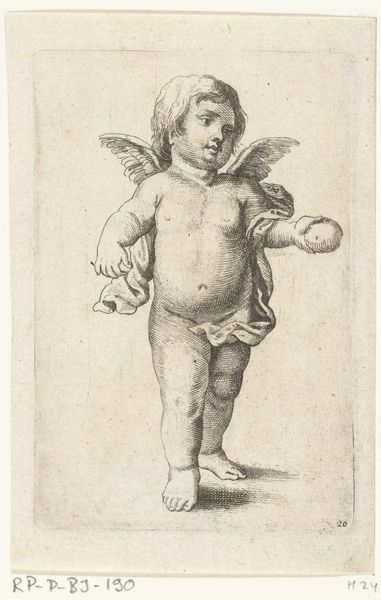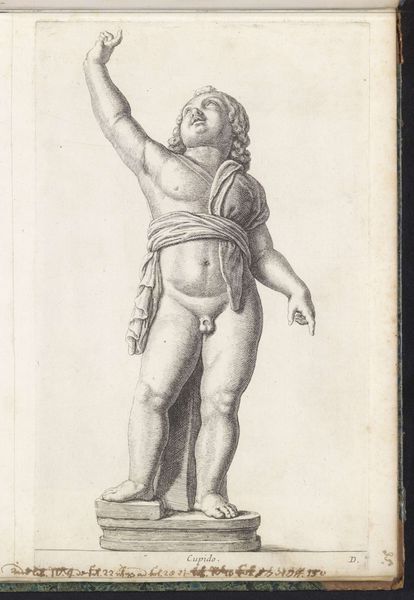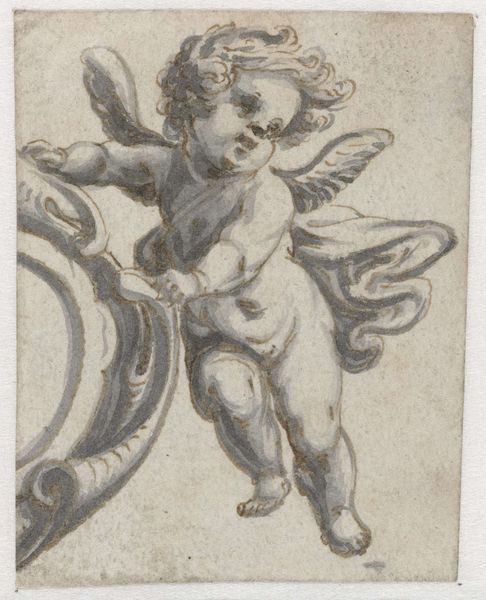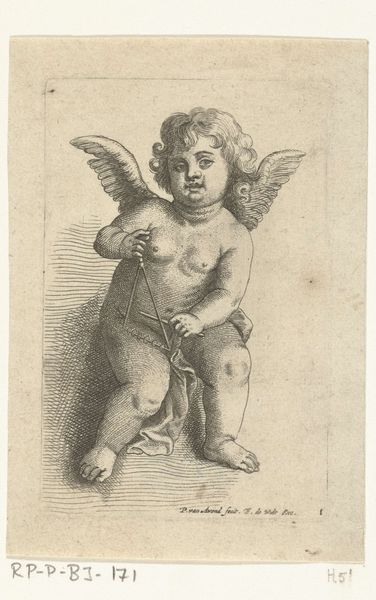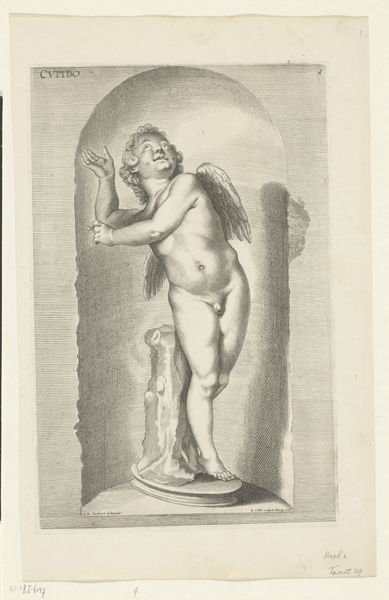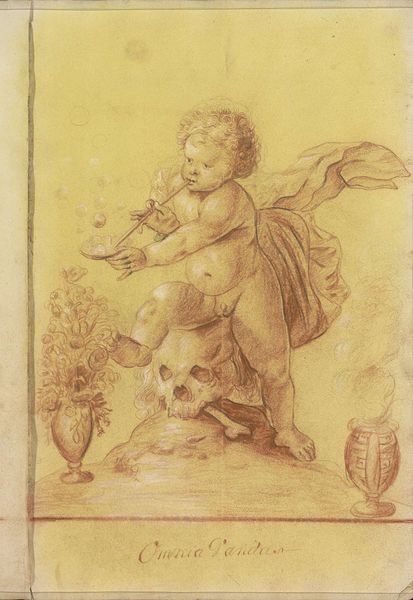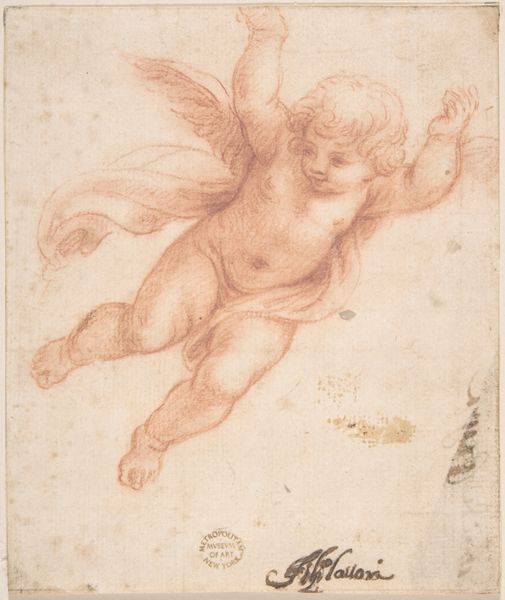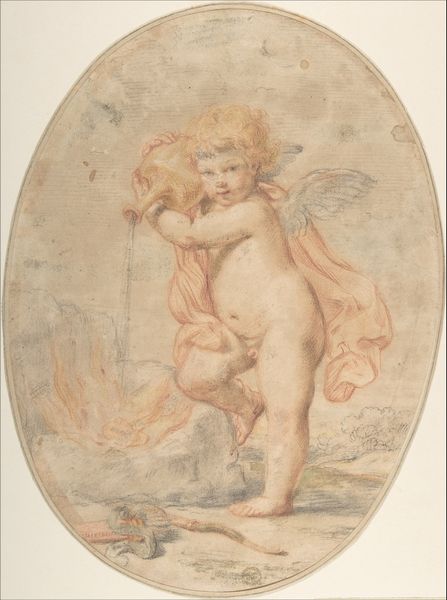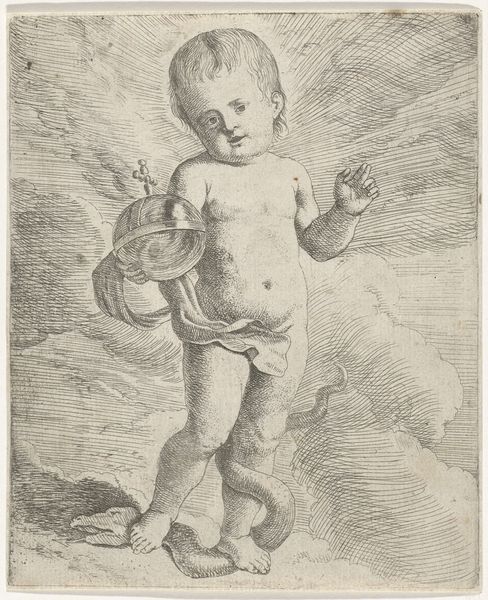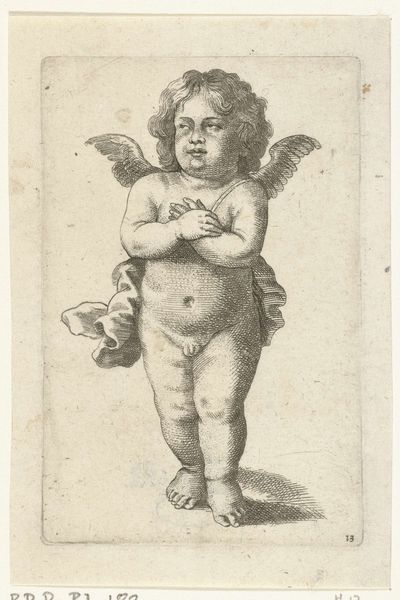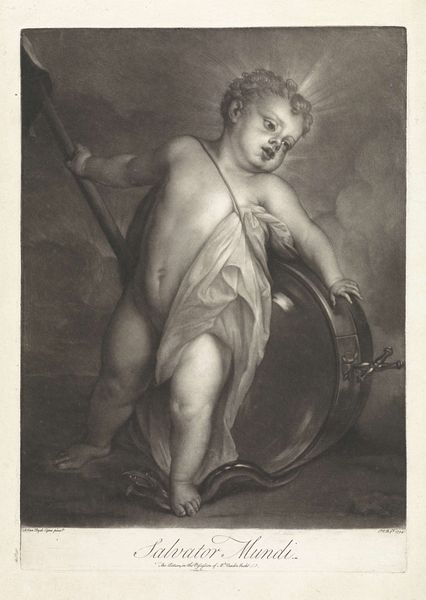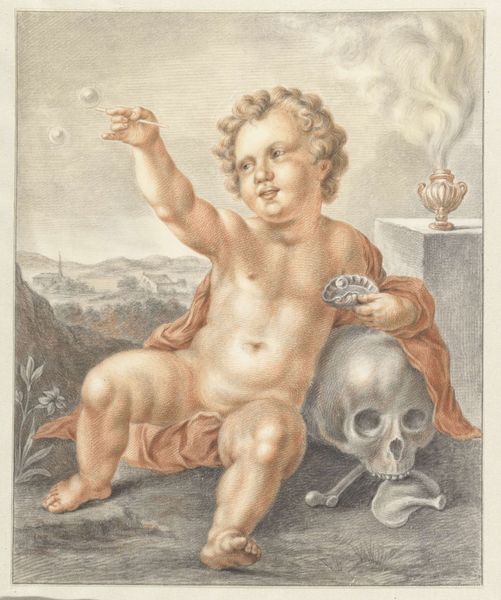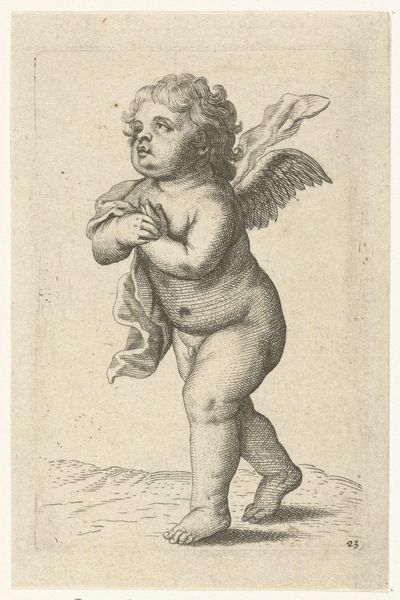
gold, sculpture, wood
#
baroque
#
gold
#
figuration
#
sculpture
#
wood
#
decorative-art
#
angel
Dimensions: Height: 15 1/2 in. (39.4 cm)
Copyright: Public Domain
Curator: Well, here we have a piece titled "Angel" by Christian Jorhan the Elder, dating roughly from 1730 to 1765. It's a wood sculpture with gold embellishments and can be found here at the Metropolitan Museum of Art. Editor: It’s…unexpectedly fleshy. That is my first impression. The wood grain gives the cherubic figure a real, almost uncomfortably human presence despite the obviously ornamental, Baroque styling. Curator: Indeed, it challenges the often-sterile or idealized portrayals of angels. The carving's tactile nature speaks to the artist's skilled manipulation of materials, bridging that divide between sculpture as high art and the more grounded tradition of woodworking as craft. Consider the guilds of the time. What sort of collaborative shop produced such work? What specific artisan carved the angel’s body versus applying the gilding? Editor: A great point about artistic workshops. It’s fascinating to consider this angel within the broader context of the Counter-Reformation, where art served a very specific purpose. These weren't just decorative objects; they were powerful tools used to evoke religious sentiment and inspire devotion within church spaces. Where would an angel like this have been placed in a church? Curator: Precisely! That connection to socio-political history is essential. The very scale suggests its probable placement: High on a wall, or as part of a larger, even theatrical altarpiece. Wood, after all, was an easily obtainable material within early modern workshops, and its usage here makes an eloquent case for local, readily available modes of artisanal making, contrasting the gilded embellishments to produce visual texture. Editor: It definitely brings a certain dynamism and spectacle that resonated within those sacred spaces. Think about the rise of baroque aesthetics as deliberate strategies to engage the masses during times of great religious and political upheaval. I can also picture it as part of some dynastic family collection, maybe displayed to communicate virtue, or the families connection with higher entities. Curator: Yes, it could signal earthly power manifested by such divine symbols. Its very existence relies on consumption, but in order to serve a function, a devotional experience. Its production value relied upon highly organized modes of making during that historical moment. The wood supports the gold just as the artist’s hands elevated the Baroque intention. Editor: And the museum continues that tradition. Today, this angel prompts new dialogues across time and shifting interpretations of art. What an astonishing lineage for a simple wooden figure!
Comments
No comments
Be the first to comment and join the conversation on the ultimate creative platform.
